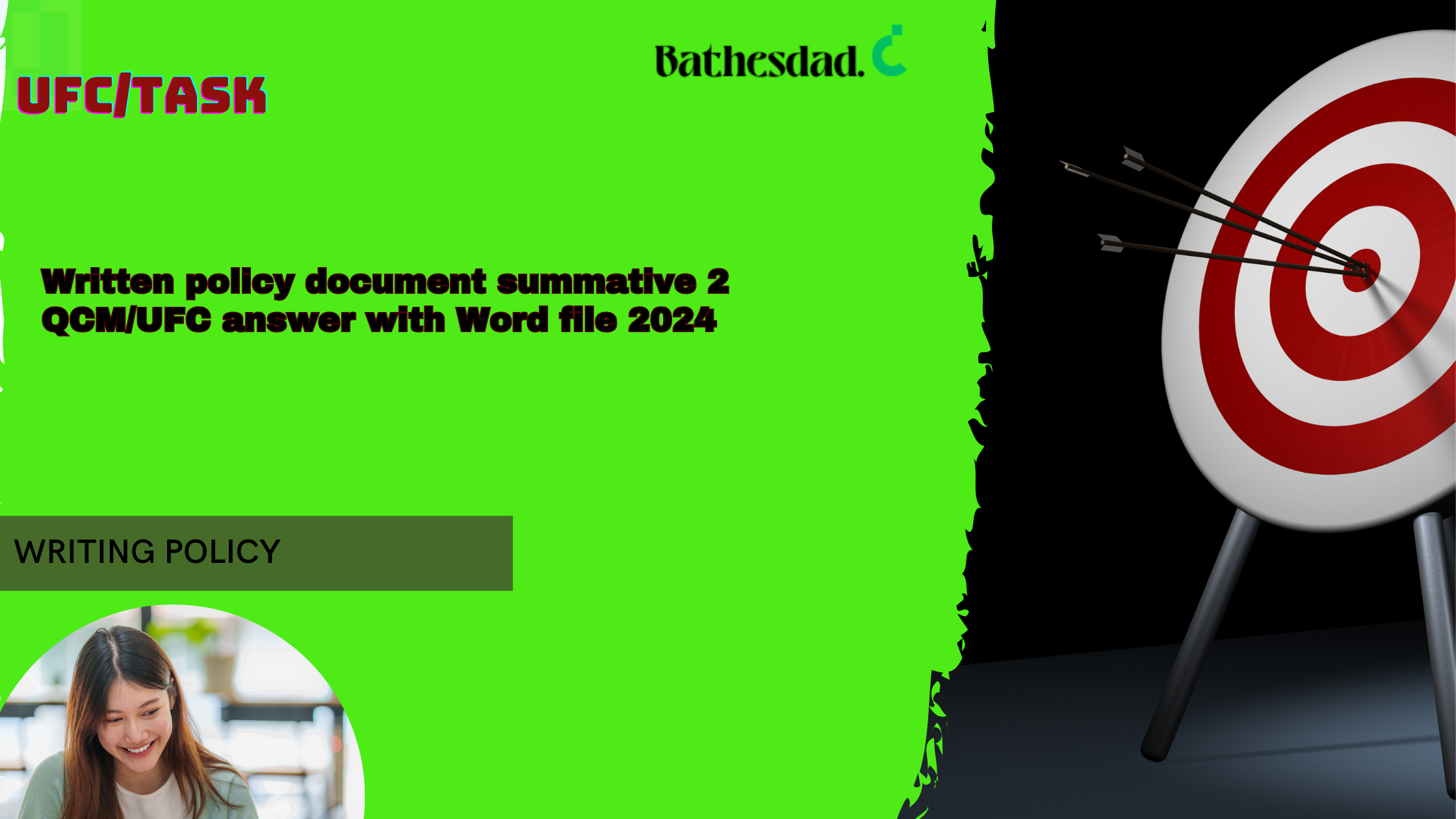Summative 2
Choose the correct answer.
1. What is the primary purpose of a well-written policy document for economic impact?
a. To impress stakeholders with complex language
b. To provide a theoretical overview of economic concepts
c. To clearly articulate objectives and strategies for addressing an economic challenge
d. To create ambiguity and stimulate debate
2. Why is stakeholder engagement considered a crucial aspect of policy document development?
a. To make the document longer and more comprehensive
b. To ensure that stakeholders have a say in every detail of the policy
c. To foster inclusivity, consider diverse perspectives, and enhance the policy's effectiveness
d. To demonstrate the dominance of policymakers over stakeholders
3. What does a literature review contribute to the development of a policy document?
a. Historical anecdotes unrelated to the economic challenge
b. Comprehensive data and evidence supporting the policy
c. Opinions and conjectures from non-experts
d. Theoretical frameworks without practical application
4. In the context of writing policy documents, why is a clear and concise language important?
a. To showcase the author's linguistic prowess
b. To add complexity and depth to the document
c. To prevent stakeholders from fully understanding the policy
d. To ensure accessibility and understanding by a broad audience
5. What is the purpose of risk assessment in policy document development?
a. To downplay potential challenges
b. To ignore potential risks and focus solely on benefits
c. To identify potential challenges and propose strategies for mitigation
d. To increase the perceived uncertainty of the policy
6. How does an implementation roadmap contribute to a policy document?
a. It adds unnecessary details and complexity
b. It outlines timelines, milestones, and responsibilities for effective execution
30
c. It is an optional section without
significant impact d. It creates confusion
among stakeholders
7. What is the role of data-driven arguments in a policy
document?
a. To distract readers from the main objectives
b. To impress with statistical jargon
c. To strengthen the policy's credibility and support its
arguments d. To provide fictional data for illustrative
purposes
8. Why is a well-structured policy document
important?
a. To confuse readers and challenge their
comprehension
b. To demonstrate the author's creativity
c. To facilitate ease of comprehension and logical flow
of ideas d. To prioritize aesthetic appeal over content
9. What is the purpose of stakeholder analysis in the policy development
process?
a. To exclude certain stakeholders based on personal preferences
b. To identify and understand key stakeholders and their interests
c. To promote a one-size-fits-all approach in policy
implementation d. To create unnecessary bureaucracy in the
decision-making process
10. How does plain language principles apply to policy document
writing?
a. By introducing complex terminology to impress the audience
b. By avoiding any form of visualization
c. By communicating complex ideas in clear and accessible
language d. By excluding stakeholders from the
communication process
Answers
1. c. To clearly articulate objectives and strategies for addressing an economic challenge
2. c. To foster inclusivity, consider diverse perspectives, and enhance the policy's effectiveness
3. b. Comprehensive data and evidence supporting the policy
4. d. To ensure accessibility and understanding by a broad audience
5. c. To identify potential challenges and propose strategies for mitigation
6. b. It outlines timelines, milestones, and responsibilities for effective execution
7. c. To strengthen the policy's credibility and support its arguments
8. c. To facilitate ease of comprehension and logical flow of ideas
9. b. To identify and understand key stakeholders and their interests
10. c. By communicating complex ideas in clear and accessible language






